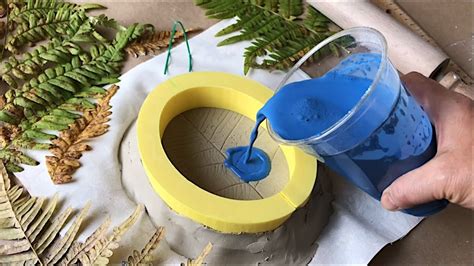How To Color Plaster
Ronan Farrow
Mar 31, 2025 · 3 min read

Table of Contents
How to Color Plaster: A Comprehensive Guide
Adding color to plaster offers a fantastic way to personalize your home, from subtle hues to vibrant statements. This guide dives into the various methods for coloring plaster, providing you with the knowledge to achieve stunning results. Whether you're a seasoned DIY enthusiast or a first-time plasterer, this comprehensive walkthrough ensures success.
Choosing Your Color and Plaster Type
Before you begin, selecting the right color and plaster type is crucial. Consider the overall aesthetic of your space and the desired finish.
Color Selection:
- Consider the undertones: Pay close attention to undertones, as they significantly impact the final color. A seemingly neutral gray might have subtle blue or green undertones. Sample colors on your wall or a test area before committing to a large batch.
- Light and shade: Remember that the color will appear slightly different depending on the lighting in the room. Consider how the color will look in natural light versus artificial light.
- Color palettes: Explore color palettes online or in paint stores to discover harmonious color combinations. You can use tools that allow you to visualize different color combinations with your chosen color.
Plaster Types:
- Cement-based plasters: These are highly durable and suitable for exterior applications. However, they can be more challenging to work with than lime-based plasters.
- Lime-based plasters: These are breathable and offer a more natural finish, often preferred for interior projects. They are generally easier to work with, making them a good choice for beginners.
- Pre-mixed plasters: These are convenient but offer less control over the final color and texture.
Methods for Coloring Plaster
There are several ways to add color to your plaster, each offering unique advantages and challenges.
1. Adding Pigment to the Mix:
This is the most common method and provides the most even color distribution. Use high-quality pigments specifically designed for plaster.
- Type of pigment: Use pigments specifically designed for plaster or lime. Using regular paint pigments may not provide the desired durability or color fastness.
- Mixing ratio: Start with a small amount of pigment and gradually add more until you reach your desired shade. It's easier to add more pigment than to remove it. Thoroughly mix the pigment into the plaster mix until you achieve a uniform color.
2. Coloring the Plaster After Application:
This method allows for more creative techniques but requires greater skill.
- Pigment washes: Apply a wash of diluted pigment to the surface of the dry plaster for a translucent effect. Experiment with layering multiple washes for depth and complexity.
- Paints designed for plaster: These paints are formulated to adhere well to plaster surfaces and provide a durable finish. Ensure that the paint is compatible with your type of plaster.
- Stencils and stamping: Use stencils or stamps to create unique patterns on the surface of the dry plaster.
3. Using Colored Aggregates:
Adding colored aggregates like small stones, glass, or marble chips can create interesting textural effects.
- Aggregate size: Choose an aggregate size appropriate for the scale of your project. Larger aggregates are more noticeable and can create a more rustic look.
- Color coordination: Select aggregates that complement your chosen plaster color. This can create a visually stunning and unique finish.
Preparing and Applying the Colored Plaster
Proper preparation is key to a successful project.
- Surface preparation: Ensure your surface is clean, dry, and free from any loose materials. Repair any cracks or imperfections before applying the plaster.
- Mixing the plaster: Follow the manufacturer's instructions carefully when mixing your plaster. Consistency is crucial for a smooth finish.
- Application techniques: Apply the plaster using appropriate tools, such as trowels or sponges, depending on the desired finish.
Maintaining Your Colored Plaster
Proper maintenance will prolong the lifespan and beauty of your colored plaster.
- Cleaning: Regularly clean the plaster using a soft brush or cloth. Avoid abrasive cleaners.
- Protection: Consider applying a sealant to protect the plaster from moisture and wear.
By following these steps and choosing the right methods for your project, you can confidently create stunning and long-lasting colored plaster finishes. Remember that practice makes perfect, so don't be afraid to experiment and discover your own unique techniques.
Featured Posts
Also read the following articles
| Article Title | Date |
|---|---|
| How To Get A Domestic Partnership In Pennsylvania | Mar 31, 2025 |
| How To Get Foam Out Of A Hot Tub | Mar 31, 2025 |
| How To Get Boat On Plane Faster | Mar 31, 2025 |
| How To File A Motion For Bond Reduction | Mar 31, 2025 |
| How To File A Complaint Against An Attorney In Georgia | Mar 31, 2025 |
Latest Posts
-
How Great Our Joy Sheet Music
Apr 04, 2025
-
How Great Is Our God Chords Key Of G Pdf
Apr 04, 2025
-
How Good Is A Deers Memory
Apr 04, 2025
-
How Good Are Duracell Car Batteries
Apr 04, 2025
-
How God Became King By Nt Wright
Apr 04, 2025
Thank you for visiting our website which covers about How To Color Plaster . We hope the information provided has been useful to you. Feel free to contact us if you have any questions or need further assistance. See you next time and don't miss to bookmark.
